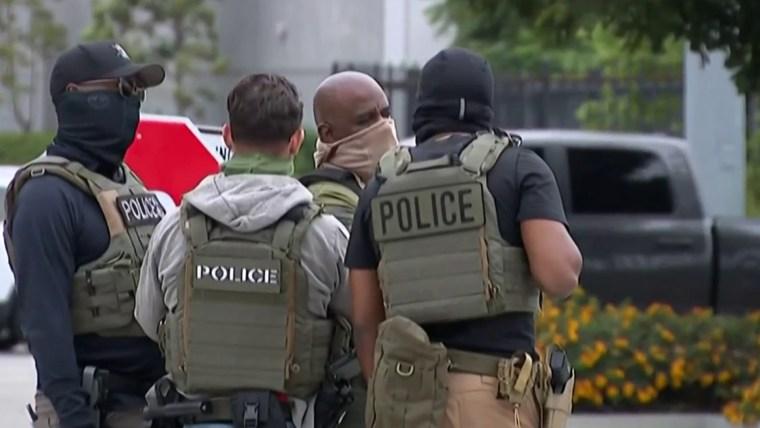Supreme Court Broadens Immigration Patrol Powers in Los Angeles: A New Chapter in Enforcement
Landmark Supreme Court Ruling Enhances Federal Immigration Patrol Adaptability
The U.S. Supreme Court has recently overturned previous limitations on roving immigration patrols within the Los Angeles metropolitan region, granting federal agents expanded authority to conduct warrantless stops beyond fixed checkpoints. This pivotal ruling allows immigration officers to operate with greater mobility across urban neighborhoods, aiming to improve the detection of unauthorized immigrants. While supporters highlight the potential for more effective enforcement, opponents caution that this expansion may jeopardize civil liberties and strain community relations.
Under the new framework, immigration agents are empowered to:
- Conduct stops and inquiries of individuals suspected of immigration violations outside customary checkpoint zones
- Patrol extended urban areas without geographic restrictions, covering contiguous neighborhoods
- Collaborate more closely with local law enforcement agencies to facilitate swift enforcement actions
| Aspect | Prior to Ruling | Post-Ruling Changes |
|---|---|---|
| Operational Boundaries | Confined to fixed immigration checkpoints | Expanded to include roving patrols citywide |
| Enforcement Reach | Geographically limited | Broadened to cover wider urban zones |
| Interagency Cooperation | Minimal coordination with local police | Enhanced partnerships with municipal law enforcement |
Community Policing and Civil Rights: Legal Experts Weigh In
The Supreme Court’s decision has sparked intense debate among legal scholars and civil rights advocates.Proponents argue that the ruling equips immigration authorities with the tools necessary to respond more effectively to unauthorized immigration, potentially improving public safety. Conversely, critics warn that the expanded powers risk undermining community policing efforts by fostering distrust among immigrant populations, which could lead to decreased cooperation with local law enforcement.
Central concerns raised include:
- Increased surveillance and random stops beyond established checkpoints, raising constitutional challenges
- The difficulty of harmonizing federal immigration enforcement priorities with local policing goals
- Potential violations of Fourth Amendment protections against unreasonable searches and seizures
- Negative effects on community trust, possibly reducing crime reporting and cooperation
| Issue | Possible Consequences | Legal Challenges |
|---|---|---|
| Expanded Patrol Zones | More frequent stops and detentions | Risk of unconstitutional searches and profiling |
| Community Relations | Decline in trust toward law enforcement | Reduced willingness to report crimes |
| Federal-Local Coordination | Potential jurisdictional conflicts | Strained interagency partnerships |
Calls for Strengthened Federal-State Collaboration in Immigration Enforcement
Following the Supreme Court’s ruling, local officials in Los Angeles are advocating for improved coordination between federal immigration authorities and state law enforcement to ensure enforcement efforts are both effective and respectful of community rights. Leaders emphasize that cooperative strategies are essential to balance border security concerns with the protection of civil liberties, especially in diverse urban environments.
Key priorities outlined by local leadership include:
- Establishing regular communication channels between ICE and state police
- Developing joint training initiatives focused on constitutional rights and cultural sensitivity
- Implementing clear reporting systems to foster public confidence
- Allocating resources for community outreach to alleviate fears among immigrant residents
| Agency | Primary Role | Focus Area |
|---|---|---|
| Immigration and Customs Enforcement (ICE) | Federal Immigration Enforcement | Border security and removal operations |
| State Police | Support and Coordination | Facilitating law enforcement partnerships |
| Local Police Departments | Community Safety | Protecting neighborhoods and fostering trust |
Strategies for Harmonizing Public Safety with Immigrant Rights
To maintain public safety while safeguarding the rights of immigrant communities, law enforcement agencies must prioritize transparency, accountability, and cultural competence. Collaborations with local advocacy groups can build bridges of trust, encouraging immigrant residents to engage with authorities without fear of discrimination or unjust treatment. Clear, written protocols are essential to prevent racial profiling and uphold constitutional protections during immigration patrols.
Recommended policy measures include:
- Establishing community oversight boards to monitor immigration enforcement activities and address public concerns
- Providing accessible legal education sessions to inform immigrant populations about their rights
- Utilizing data analytics to assess patrol impacts and prevent disproportionate targeting of vulnerable groups
| Advice | Expected Outcome |
|---|---|
| Community Engagement Initiatives | Builds mutual trust and cooperation |
| Ongoing Officer Training | Reduces incidents of racial profiling |
| Transparent Enforcement Policies | Protects civil liberties and fosters accountability |
Conclusion: Navigating the Complexities of Immigration Enforcement Post-Ruling
The Supreme Court’s recent decision to remove restrictions on roving immigration patrols in Los Angeles represents a transformative moment in federal immigration enforcement. This progress intensifies the ongoing national conversation about balancing effective immigration control with the protection of individual rights and community trust. As law enforcement agencies adapt to this expanded authority, continued dialog among federal, state, and local stakeholders—as well as immigrant communities—is vital to ensure enforcement practices are both just and effective. The ruling’s implications may well extend beyond Los Angeles,influencing immigration policy and enforcement strategies across the United States.



